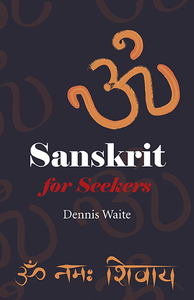
Everyone (reading this blog!) has heard of the syllable ‘OM’. The Devanagari for this is the immediately recognizable ॐ but it is made up of three letters, a, u and m. Thus, it could actually be represented as औम् and the ITRANS, instead of being written OM, would be ‘aum’.
How OM can function as a symbol for brahman or the entirety of creation is elucidated by Gaudapada and described in my book ‘A-U-M: Awakening to Reality’. Here is the section that describes the Sanskrit aspects:
*****
The spoken word ‘OM’ is actually Sanskrit. The written ‘OM’ is its ‘Romanized’ representation (i.e. using the English alphabet). In its original language, it actually looks like this:
ॐ
If you have ever been to India, this character will be very familiar and it also frequently appears on New Age items and jewelry. But this is in fact a special, shorthand representation and the word is actually formed from three separate letters. (Only this word, in the entire language, has a special symbol – this is an indication of how important it is considered to be.) Continue reading

